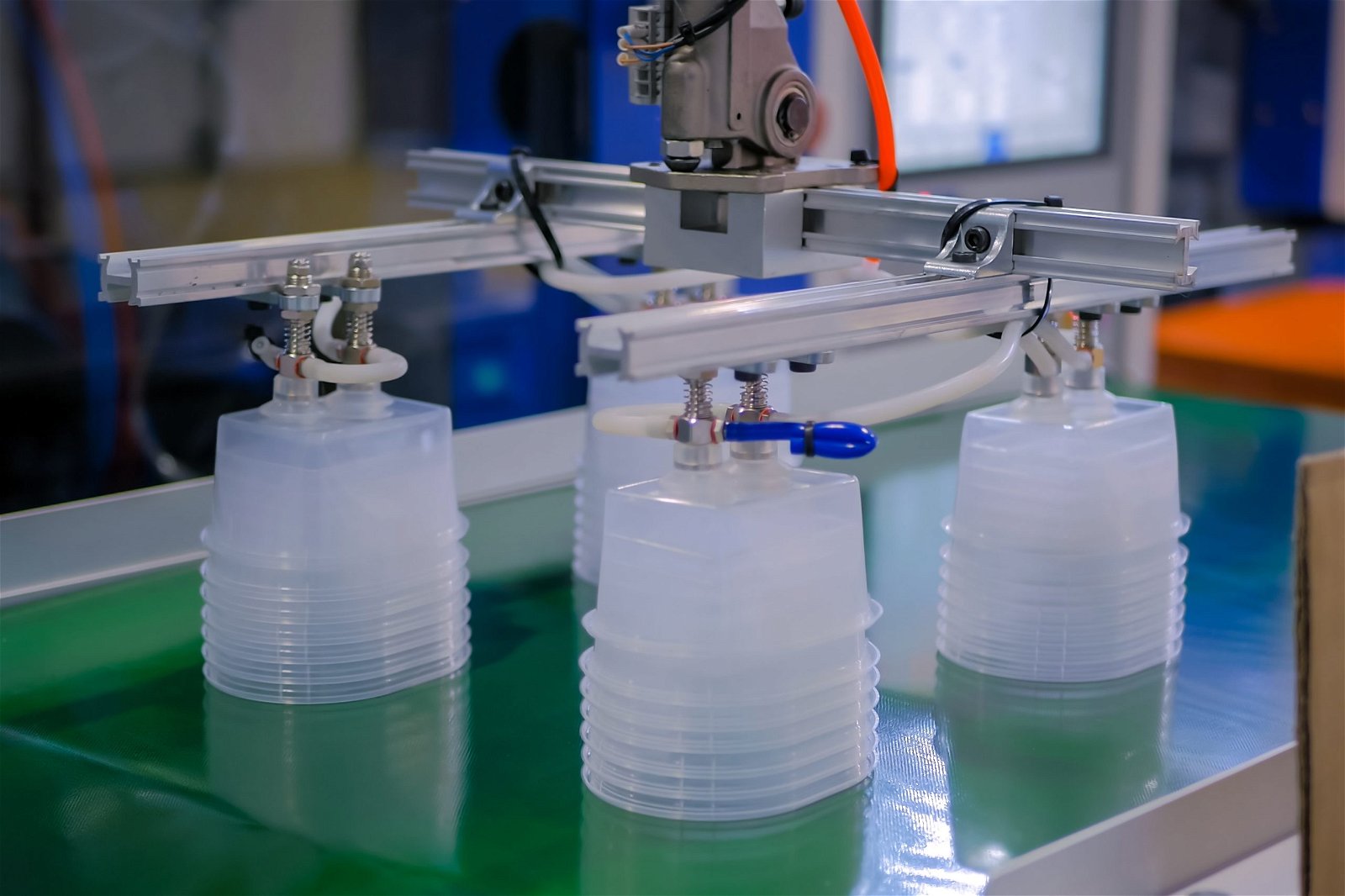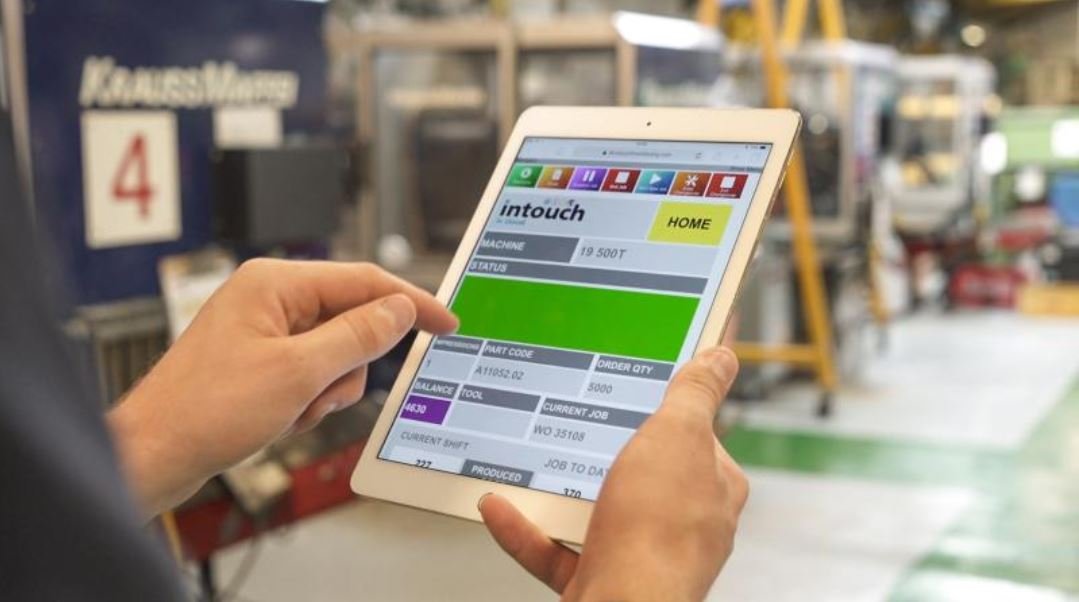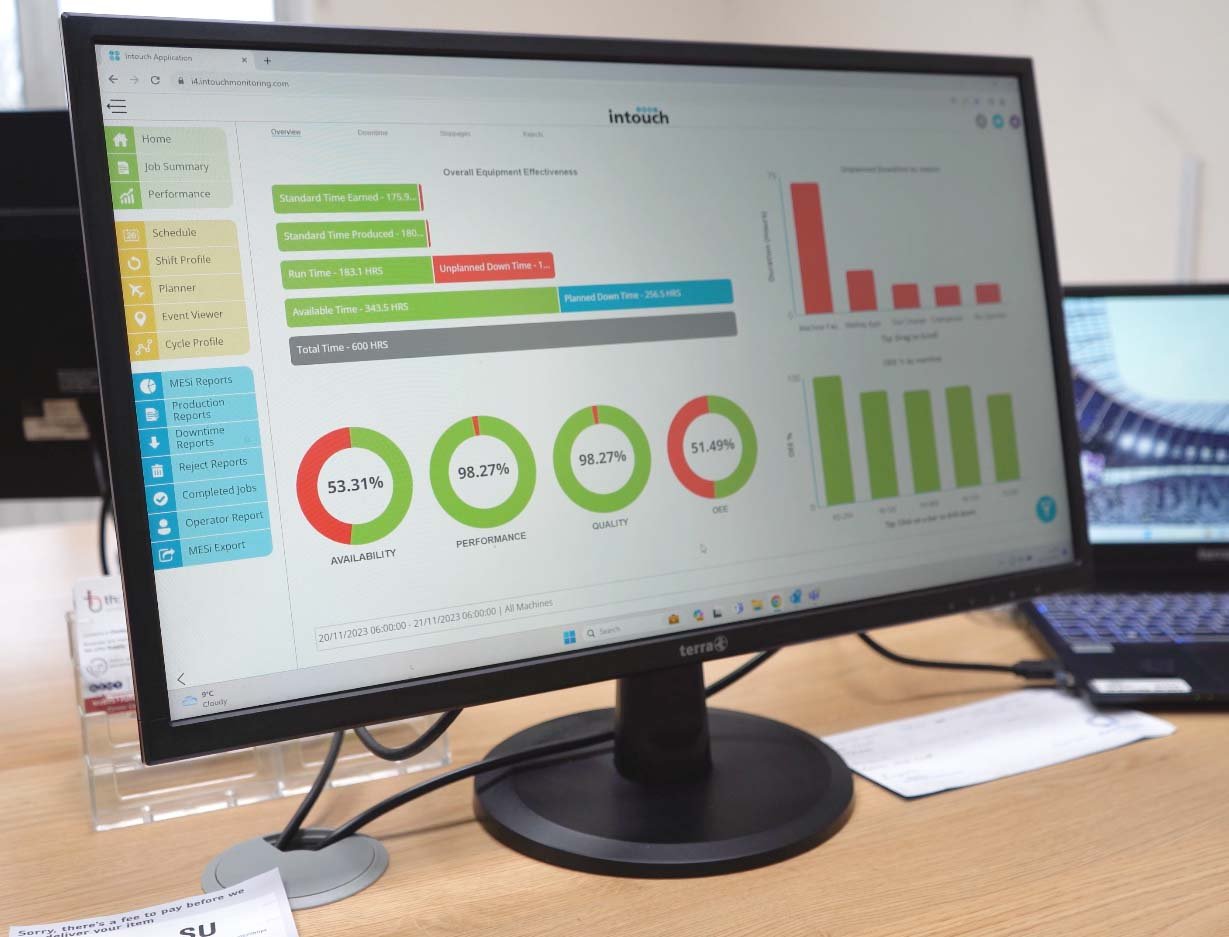Why relying on spreadsheets for Production Planning will reduce your competitive advantage

For manufacturers across the globe, staying competitive is about more than just quality products and efficient processes – you need to be agile, responsive, and ahead of the curve. That means reacting quickly to customer demands, managing capacity in real time, and spotting bottlenecks before they slow you down.
One of the most significant challenges manufacturers face is optimising production schedules, yet many still rely on spreadsheets to plan and manage production. While spreadsheets might feel familiar and convenient, they’re simply not built for the dynamic, complex nature of modern manufacturing. Relying on them can lead to missed opportunities, unexpected delays, and inefficient use of resources — ultimately reducing your competitive advantage.
Here, we’ll explain why spreadsheets are ill-suited for production planning and how they can lead to missed opportunities, unexpected delays, and an inability to effectively manage your production capacity. Ultimately, we’ll show you how a more modern, visual planning tool can help you avoid these pitfalls and gain a significant competitive edge.
Let’s explore why spreadsheets fall short and how switching to a visual, real-time planning tool can transform your operations.
1. Spreadsheets are static, manufacturing isn’t
Spreadsheets, while powerful for simple data tracking, lack the ability to provide a real-time, dynamic view of your production operations. When you input data into a spreadsheet, you’re essentially creating a snapshot of what’s happening at that moment.
However, manufacturing environments are constantly changing, with machines breaking down, delays in raw material deliveries, or changes in customer orders. Spreadsheets cannot track these variables in real time.
Why this reduces your competitive advantage: Spreadsheets quickly become outdated, and when you make decisions based on this outdated information, you’re setting yourself up for operational inefficiencies. For example, if a machine unexpectedly breaks down and this isn’t reflected in your spreadsheet, you might overcommit resources to a schedule that’s no longer realistic. This means you’re either missing deadlines or overloading other resources to meet customer demands.
Imagine a scenario where a breakdown occurs but isn’t updated in your spreadsheet until hours later. You might think you have the capacity to take on new orders, but in reality, you’re scrambling to catch up and failing to meet customer expectations. With outdated data, you’re making decisions based on assumptions, not the actual state of your operations.
Manufacturing is fluid. Your planning tool should be too.
2. Lack of visual insight into your capacity
One of the major drawbacks of spreadsheets is that they do not provide a clear, visual overview of your production capacity. At any given moment, you need to know whether your machines are at full capacity, running below it, or whether there’s an unexpected bottleneck that could cause delays. Spreadsheets offer rows and columns of data, but they don’t give you a clear, visual layout of your production schedule or available capacity. Obviously, there are ways to create visuals within Excel or by using tools such as Power BI.
Why this reduces your competitive advantage:
Without a visual representation of your production capacity, you risk missing opportunities to optimise your schedule. For example, let’s say a machine is underutilised on a particular day, but it’s not immediately obvious in your spreadsheet. If you don’t spot this spare capacity, you might miss an opportunity to take on a new customer order or expedite an existing one.
To maintain a competitive advantage, being able to quickly identify and allocate available capacity is crucial. Spreadsheets simply don’t allow for this level of flexibility or ease of use. You can’t instantly see where you can free up resources or predict where bottlenecks will form, which ultimately leaves you more vulnerable to delays and missed opportunities.
3. Difficulty in identifying and addressing bottlenecks
Bottlenecks are one of the most frustrating and costly issues in manufacturing. When a machine or a process is overloaded, it slows down the entire production line, leading to delays, reduced throughput, and even dissatisfied customers. While spreadsheets can track individual tasks or operations, they don’t give you an immediate, holistic view of the entire production flow. This means you can’t easily spot where bottlenecks are occurring or predict when one might form.
Why this reduces your competitive advantage:
Without the ability to proactively identify bottlenecks, you’re forced into a reactive mode. You might only realise there’s a problem when it’s already affecting your production timelines, meaning you’re scrambling to fix it while your competitors are already one step ahead. When you don’t have visibility into potential bottlenecks, you’re also less able to reschedule or reallocate resources to prevent delays before they happen.
In comparison, a visual planning tool with a reactive Gantt chart can provide real-time updates and clearly show when a machine is overloaded or when production is about to fall behind. With this insight, you can make adjustments on the fly — whether that’s moving tasks to another machine or shifting the production schedule to avoid a bottleneck.
4. Coordination and collaboration become a headache
Another issue with relying on spreadsheets for production planning is that they don’t foster easy collaboration. In many manufacturing environments, different departments or teams are responsible for different parts of the production process. Sales teams, production planners, machine operators, and maintenance crews all need to coordinate to ensure that production runs smoothly. However, when everyone is working from different versions of a spreadsheet, it’s easy for miscommunications or errors to slip through the cracks.
Why this reduces your competitive advantage:
Inefficient coordination and communication lead to confusion, delays, and mistakes. Production schedules may clash, maintenance may be scheduled at the wrong time, or important customer orders may get overlooked. When all teams are working in silos with outdated or inaccurate data — or simply working on different versions — it’s nearly impossible to maintain a seamless production process. Meanwhile, your competitors with more advanced systems can react faster and more efficiently, leaving you at a disadvantage.
By switching to a more modern scheduling tool, you can integrate different teams into a single collaborative platform where they can access up-to-date, accurate information in real time. This improves communication and coordination, ultimately resulting in smoother operations and a more agile response to customer demands.
5. Human error
Spreadsheets are notoriously prone to human error. Whether it’s accidentally overwriting data, entering the wrong numbers, or making a mistake in complex formulas, it’s all too easy to introduce errors into your production schedule. These mistakes can quickly snowball and cause production delays, missed deadlines, and poor customer satisfaction.
Why this reduces your competitive advantage:
Human error in spreadsheets can have far-reaching consequences, and even a small mistake can cause significant disruptions to your production process. With manufacturing operations that involve hundreds, if not thousands, of moving parts, relying on spreadsheets increases the likelihood of mistakes that could be avoided with a more intuitive and reliable planning tool.
In contrast, using an automated, software-based planning system minimises the risk of human error. The system can validate data inputs and automate complex calculations, ensuring that your production schedules are accurate and reliable.
Real-time data = real-time decisions
At this point, you may be wondering how to overcome these challenges. The answer is simple: switch from spreadsheets to a modern production scheduling tool that offers a visual, dynamic view of your operations. A tool like the Intouch Monitoring platform is ideal for this and offers many other benefits besides scheduling.
We offer a clear, real-time visual representation of your production schedule, allowing you to instantly identify potential bottlenecks, spare capacity, and machine availability. This intuitive tool gives you a comprehensive view of your entire production process, enabling you to make smarter, faster decisions and stay ahead of the competition.
Don’t let spreadsheets hold you back
Spreadsheets were never designed for complex, real-time manufacturing planning. They’re static, prone to error, and difficult to share and version. With a real-time, reactive system, you can see the status of your production schedule in real time, making it easy to spot potential delays, unexpected downtime, or excess capacity. This allows you to be proactive rather than reactive. By predicting when and where issues may arise, you can adjust schedules on the fly and ensure that production continues smoothly, no matter what.
Relying on spreadsheets for production planning is a risky strategy that can significantly reduce your competitive advantage. Spreadsheets are static, difficult to update, and prone to errors. They don’t provide the visual insight needed to predict bottlenecks or spot spare capacity. Instead, adopt a modern production planning tool that offers a dynamic, real-time view of your operations. This will help you streamline scheduling, reduce inefficiencies, and ultimately stay ahead of the competition.
Ready to Make the Switch?
If you’re tired of dealing with the headaches that come with using spreadsheets for production planning, it’s time to take the next step. Schedule a quick, 15-minute call with our team today to discuss how our cloud-based software platform can help you improve efficiency and gain a competitive edge.
Get Started with a 60-Day Free Trial Today!
Don’t let outdated tools hold you back. Experience the power of real-time production planning and stay ahead of the competition.
3 Signs that you are ready to digitise your factory
Are you under pressure to improve efficiencies and reduce down time, which means you’re now looking to implement smart factory technology…
Plastics Manufacturing in a volatile world
The pandemic has highlighted that the need for flexibility and adaptability in manufacturing operations is crucial for navigating…
5 ways you could improve your production efficiency right now
The importance of production efficiency cannot be overstated. It means you are making the most out of your resources – time, materials,…
Have you thought about adopting smart technology?
What's stopping you adopting smart technology in your plant? Are you worried about the costs, the expertise and training needed? What is…
The advantages of a paperless manufacturing operation
So what happens when you switch to a paperless Manufacturing Execution System? You immediately get more predictable manufacturing with more…
Why is planned downtime for maintenance so important?
Often with pressure of delivery deadlines, it is easy for planned maintenance to be pushed down the priority list and only maintain it when…
How to choose the right manufacturing execution system (MES) for you
Selecting the right MES solution will give you the data and insights necessary to optimise your OEE, give you a competitive advantage and…
What would a 1%, 5% or 30% improvement in OEE mean to you?
Are you under pressure to improve efficiencies and reduce down time, which means you’re now looking to implement smart factory technology…
How to transform your plant’s efficiency and profitability with MES
Squeezing everything from your resources without compromising on quality is a challenge increasingly faced by manufacturers. So how can…
How it works
Getting started with Intouch is as easy as 1, 2, 3
1. Book a demo
Let us show you what we can do. Jump on a demo call and our friendly team will take you through the Intouch system and answer any questions you might have.
2. Enjoy a free trial
Don’t just take our word for it! We’ll lend you our technology for a 60-day free trial so you can see exactly how it can benefit the everyday operation of your business.
3. Receive ongoing support
It doesn’t end there. If you decide Intouch is the right production monitoring system for you, we’ll work with you to help you take control and make significant improvements in OEE.









